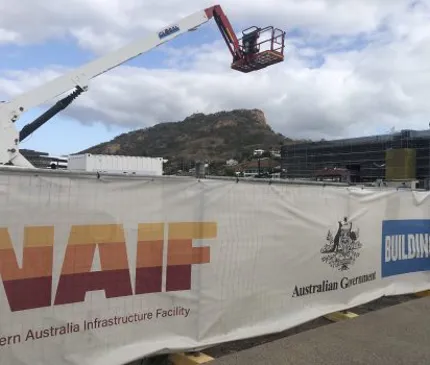Budget boost for northern Australia and Critical Minerals
Ministerial release by the Hon Madeleine King MP, Minister for Resources and Minister for Northern Australia

The Albanese Government will invest $2 billion to deliver economic benefits and opportunities for Northern Australia and its families, businesses and communities.
As announced on 21 October, the Budget will also commit new funds to accelerate growth of Australia’s critical minerals resources and industries to support new clean energy technologies as part of the Government’s commitment to achieving net-zero emissions.
The Albanese Government is investing in critical minerals, such as lithium, cobalt, manganese, titanium and rare earths, to make sure Australia can build on its world-class resources sector, diversify global supply chains, and meet growing demand for batteries, electric vehicles and clean energy technology.
Northern Australia
The Government will retain an additional $2 billion for the Northern Australia Infrastructure Facility (NAIF) to support the Government’s regional and Northern Australia agendas, as well as broader priorities including ambitions on climate, investing in manufacturing and renewables to create more local jobs, and achieving better outcomes for First Nations peoples.
“We will work with the NAIF to ensure this additional funding supports investments that are consistent with, and complementary to, our economic and social infrastructure priorities across the north,” Minister King said.
“Projects funded through the NAIF will continue to benefit local communities and lead to the creation of new jobs across the north. The investments will support the creation of new industries, and contribute to liveable communities for Australians living and working in northern Australia,” Minister King said.
Critical Minerals
Critical minerals, including rare earths, are crucial components of low-emissions technologies, such as batteries, electric vehicles and solar panels.
Australia has some of the world’s largest reserves of critical minerals. Building on the sector by generating new downstream industries and diversifying global supply chains will help Australia and its partners to meet net zero commitments.
Australia is the world’s largest lithium producer, and latest figures forecast the value of lithium exports are due to increase more than 10-fold over two years, from $1.1 billion in 2020-21 to almost $14 billion in 2022-23, with export volumes expected to grow steadily in future years.
As well as lithium, we are the world’s top producer of rutile (titanium) and the second largest producer of zircon and rare earth elements. Australia also has the world’s largest reserves of rutile (titanium), zircon (zirconium) and tantalum. Our reserves of critical minerals like antimony, cobalt, lithium, manganese ore, niobium, tungsten and vanadium, rank in the top five globally.
The Budget will include $50.5 million over four years to establish the Australian Critical Minerals Research and Development Hub.
The Hub will combine expertise from Geoscience Australia, CSIRO and the Australian Nuclear Science and Technology Organisation to work with Australia’s research sector and industry to address technical challenges and support international research and development collaborations. Bringing together these agencies in the Critical Minerals Hub will help unlock Australia’s critical minerals potential.
The Government will also allocate an additional $50.1 million over three years to the Critical Minerals Development Program for competitive grants to support early and midstage critical minerals projects. This builds on the $49.7 million recently committed to six key projects across Australia last month.
“These measures will help bring online new sources of supply, support robust supply chains, and create high-paying regional jobs for Australians, while improving Australia’s critical minerals capability and export resilience,” Minister King said.
“The programs will help to establish Australia as a renewable and critical minerals superpower. Without Australia’s resources, the world will not reach net zero.”
To continue to drive the development of the sector, the Albanese Government will also develop a new National Critical Minerals Strategy. This will be developed in consultation with industry and community stakeholders, including Traditional Owners, and will set out a vision for the sector.
Other measures include $2 million to support the Isaac Regional Council to establish a site for a Resources Centre of Excellence near Mackay in Queensland, that will provide mine workers and communities with training and access to new technologies to help meet demand for new skills.


